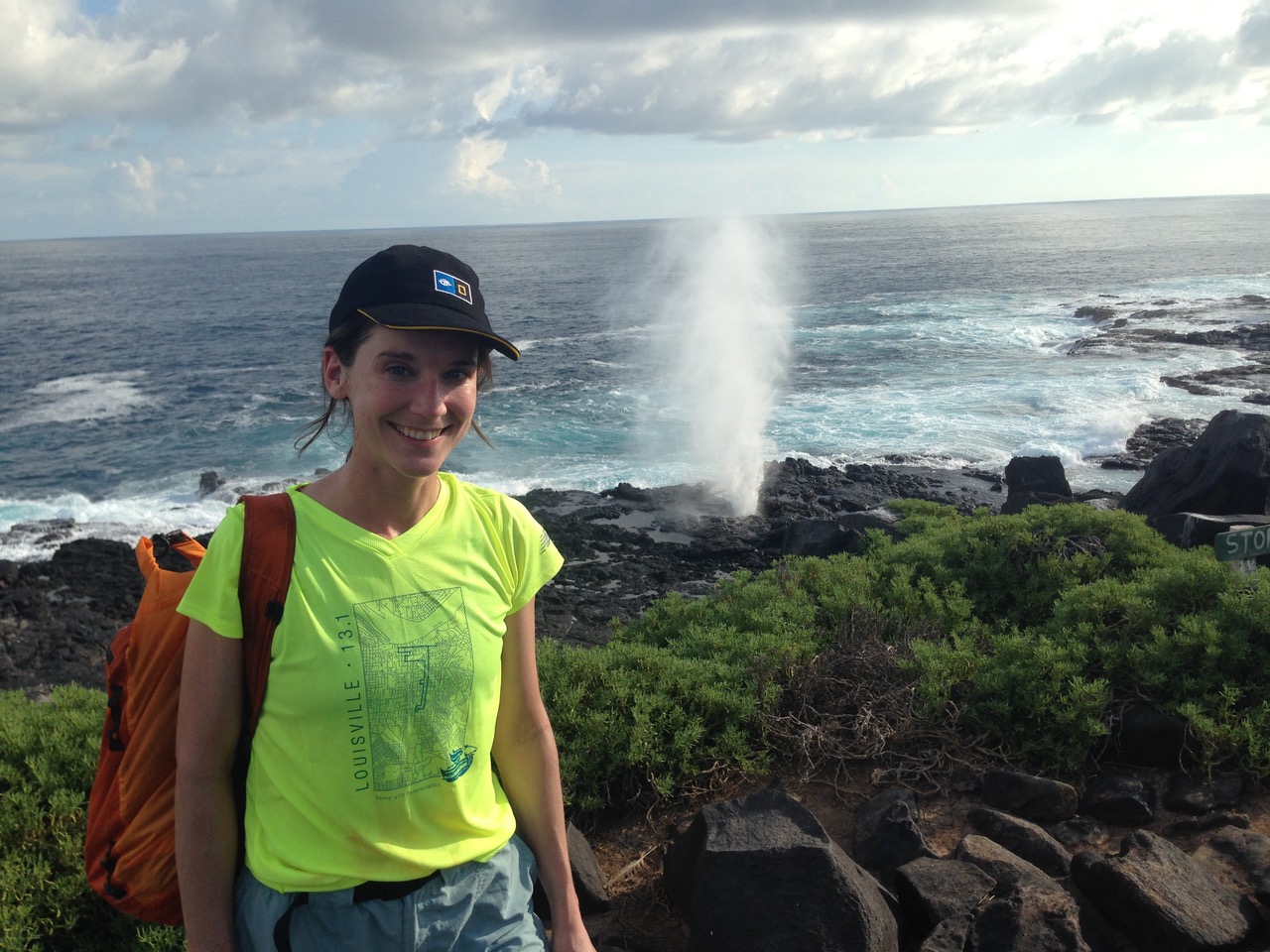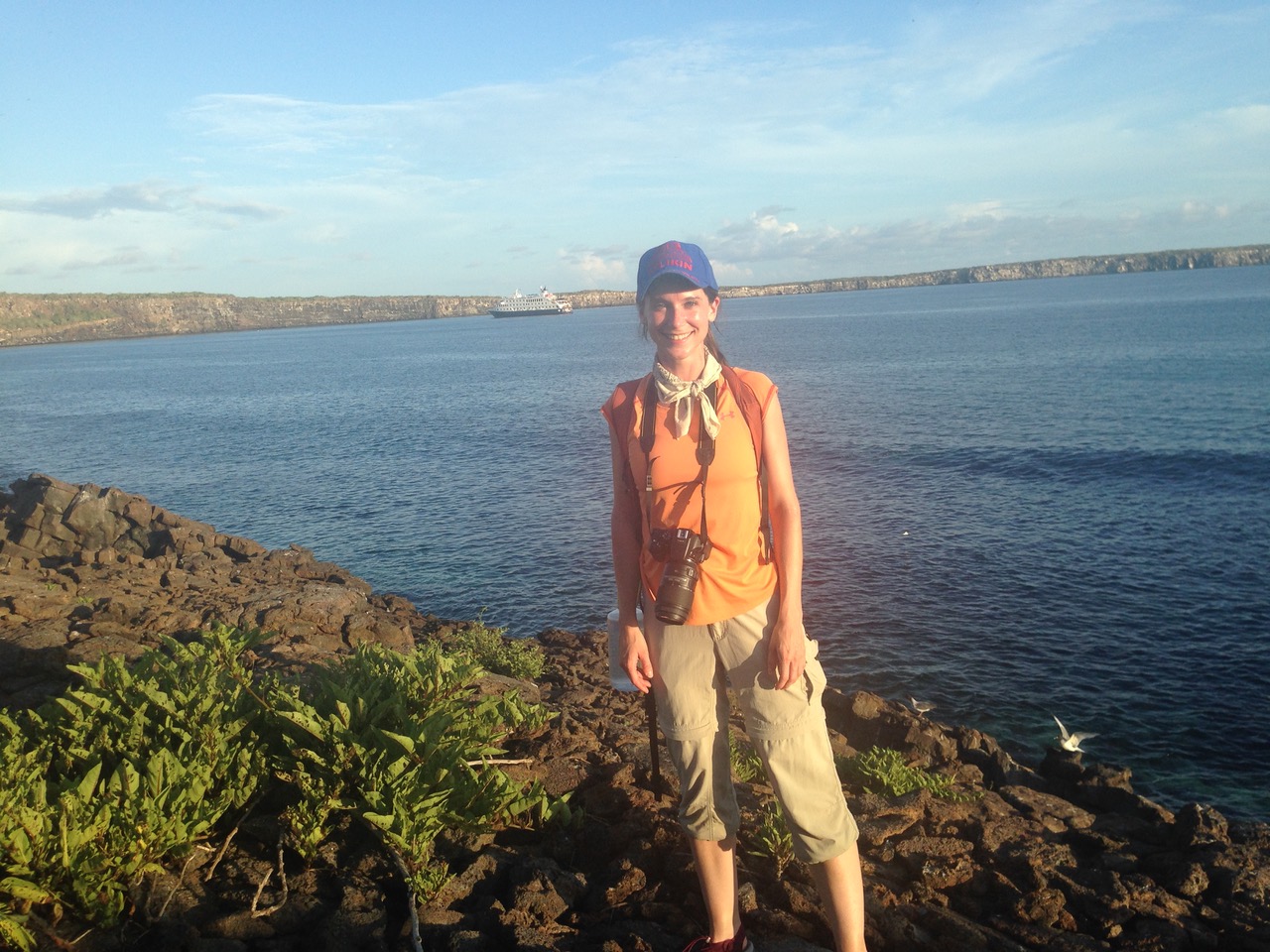Following in Darwin’s Footsteps: My Adventure in the Galapagos Islands

“We could be standing here 500,000 years ago, and things would look exactly the same,” a fellow traveler commented during my recent Galapagos Islands adventure with Lindblad Expeditions.
I understood the sentiment.
But the Galapagos are all about change — slow, ceaseless adaptation — rather than permanence.
As Charles Darwin observed almost 200 years ago, these adaptations are nowhere more apparent than in the variety of endemic species that call the Galapagos home.
A few weeks ago, I was lucky enough to get up close and personal with many of these amazing creatures.
Along with 90-odd other guests, I was aboard the newly-refitted National Geographic Endeavour II. A Lindblad team of naturalists, crew and staff ably assisted us.

“You are not on a cruise,” said Paula, our expedition leader, immediately setting the tone for the week. “You are on an expedition!”
Some of the more cynical rolled their eyes. But everyone under 18 visibly straightened their backs in excitement.
Though we were surrounded by all the modern conveniences and comforts of a traditional luxury cruise, these small linguistic flourishes helped set the stage for a cerebral and engaging week of discovery.
We guests ranged in age from six to 80. Like me, most were Americans. But there were a few Canadians, as well as a South African, two Guatemalan sisters and a Swede.
We were academics, mailmen, research scientists, poets, lawyers, pastors, salespeople, librettists, administrators of different stripes, journalists and travel advisors (me!).
What was the tie that bound this relatively diverse group of explorers? Mostly, it was a love for animals — and a palpable enthusiasm for experiencing them in the wild.
Indeed, I quickly learned the surest way to bond with fellow travelers was to excitedly point out an animal.
Animals excited all of us. And everyone went to great lengths to share their sightings with as many others as they could.

The naturalists, many of whom are themselves “endemic” to the Islands, had extensive backgrounds in chemistry, geology and biology. And no less than their guests, they were passionate about the natural world. They were eager fonts of knowledge — and never off duty.
In one of our rare “rest times” during the early afternoon, I encountered Lenin, a naturalist. I wildly gestured toward the open ocean, where I could see movement a few hundred yards away.

Handing me his binoculars, he told me they were manta rays, taking turns jumping out of the water.
“We are not certain why they come to the surface like so,” he said. “Some scientists think they are ridding themselves of parasites. Others think they are just enjoying themselves.”
I certainly was enjoying myself. I took advantage of every hiking and snorkeling opportunity I could.
Snorkeling was a vigorous, thrilling experience. Every outing was unique.
Over the course of 15 hour-long deep-water snorkels, I swam with playful sea lion pups, sea turtles and diminutive Galapagos penguins.
I saw white-tipped reef sharks, hammerhead sharks, manta rays the size of breakfast tables, graceful spotted rays and hundreds of species of tropical fish.
Hikes were challenging — largely due to the Galapagos’ unforgiving heat and humidity in March. But they also were rewarding, with each day offering a new island and a new alien landscape to explore.

Giant land iguanas, marine iguanas and bird species for which the Galapagos are famous — the Nazca, blue-footed and red-footed booby, to name three — added to the islands’ otherworldly vibe.
The island’s creatures acted as if we didn’t exist, not bothering to move off the trail even when we stepped within inches of them.
Some guests struggled with the most punishing midday hikes. But the vast majority seemed to know what they were in for.
And the kids on our departure (more than usual, I was told, because it was spring break for many school systems in the U.S.) really enjoyed themselves.
That was thanks in no small part to a pilot program that the National Geographic Society introduced on our trip specifically geared towards young people — and their constant need for stimulation and apparent inability to nap. Their parents, all nappers themselves, seemed thrilled.
The snorkeling and hiking schedule left me little time to sleep in my comfortable cabin. And I had just enough time to enjoy the bountiful meals served in the ship’s dining room.

Other memorable snapshots that underscored the amazingness of the Lindblad operation:
- Stargazing with Jean Roche, a naturalist, on the top deck when the moon was still hidden under the horizon. (I can now use the Southern Cross for navigation, if I ever find myself lost in the Southern Hemisphere!);
- Enjoying delicious, freshly-squeezed naranjilla juice that was waiting for us as we re-boarded the ship after long outings;
- The head waiter, Carlos, greeting every guest by name, three times a day, in the dining room, starting with our very first dinner (he also knew our dietary restrictions by heart);
- Crossing the equator on our last night. A slew of us crowded into the “open bridge,” the ship’s navigational heart, to which guests have 24/7 access. (And, Captain Garces, here’s a big “thank you” for always being so friendly and welcoming!)

The only glitch — if you could call it that — occurred on our last day, just before our flight to Ecuador’s mainland. A few wayward land iguanas had wandered onto the tarmac, delaying our takeoff.
No one seemed to mind.
After all, we had only a few more hours to enjoy our newfound friends. And Lindblad had seen to it that we were well fed, watered and “WiFi-ed” in the VIP airport lounge.
Three hours later, the iguanas abruptly wandered away.
So off we flew, the Galapagos Islands rapidly shrinking as we rose, until they disappeared completely beneath the cloud cover.
I was already planning my return.
Click here for the second part of my blog about the newly-refitted Endeavour II.
To see our Lindblad Galapagos Islands cruise itinerary, please click here. For more information or to book, contact us at (502) 897-1725, (800) 478-4881; to email us, click here.
(Rachel M. Hardy, travel consultant and marketing associate with The Society of International Railway Travelers, has traveled the world testing out adventures — all the better to advise you!)



